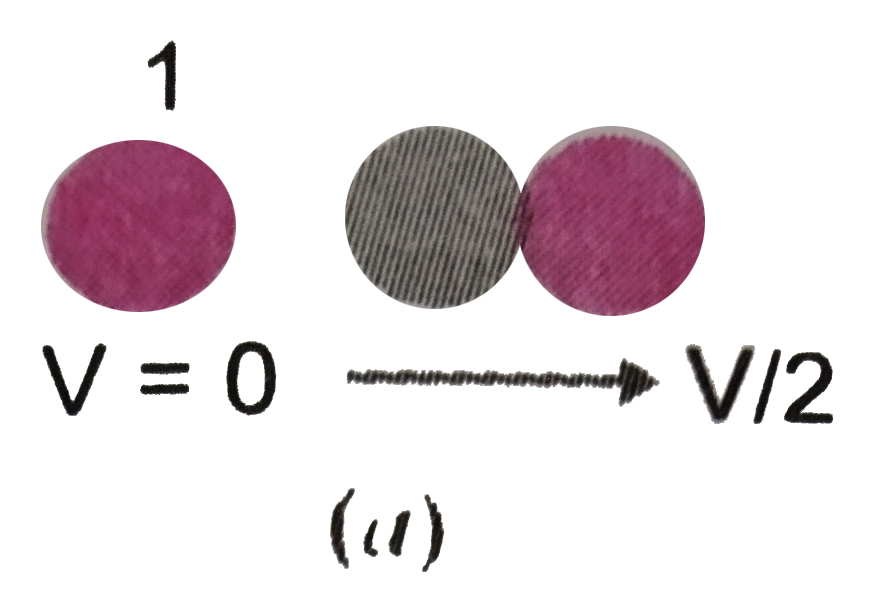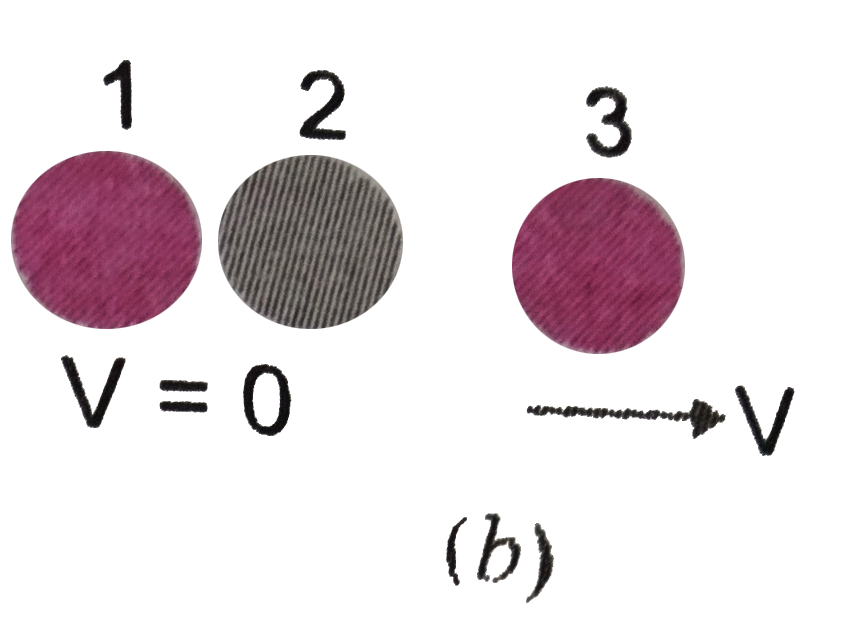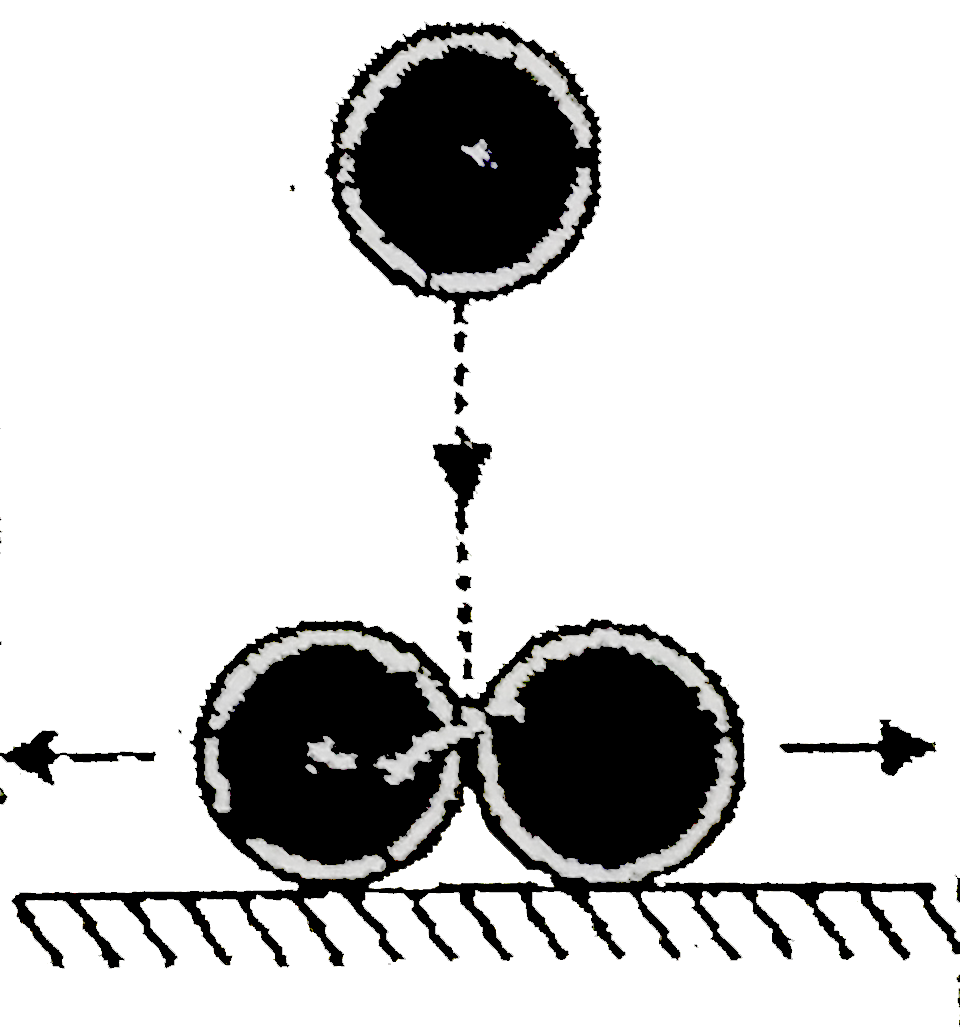Two identical ball bearings in contact with each other and resting on a frictionless table are hit head on by another ball bearing of the same mass moving initially with a speed v, figure,. If the collision is elastic, which of the following is a possible result after collisioin?





The correct Answer is:B
As the ball bearings are identical,their masses are equal. In elastic collision, their velocities are interchanges. In collision between 1 and 2, ver. Of 1 becomes zero and vel. Of 2 becomes V. In collision between 2 and 3, vel. Of 2 becomes zero and vel. of 3 becomes V. Choice (b) is correct.
Topper's Solved these Questions
- WORK, ENERGY AND POWERBook:PRADEEPChapter:WORK, ENERGY AND POWERExercise:JEE (Main and Advanced)
Explore 82 Videos
- WORK, ENERGY AND POWERBook:PRADEEPChapter:WORK, ENERGY AND POWERExercise:Comprehension
Explore 9 Videos
- WORK, ENERGY AND POWERBook:PRADEEPChapter:WORK, ENERGY AND POWERExercise:Problems For Practice
Explore 76 Videos
- THERMODYNAMICSBook:PRADEEPChapter:THERMODYNAMICSExercise:Assertion- Reason Type Questions
Explore 19 Videos
Similar Questions
Two ball bearings of mass m each moving in opposite directions with same speed v collide head on with each other. If the collision is perfectly elastic, what will be the outcome of the collision ?
View SolutionThe bob A of a pendulum released from a height h hits head-on another bob B of the same mass of an identical pendulum initially at rest. What is the result of this collision? Assume the collisio to be elastic (see figure).

View Solution
Knowledge Check
Two identical ball bearings in contact with each other and resting on a frictionless table are hit heat-on by another ball bearing of the same mass moving initially with a speed V as shown in figure.

If the collision is elastic, which of the following (figure) is a possible result after collision ?A B
B C
C D
D
A particle P moving with speed v undergoes a head -on elastic collision with another particle Q of identical mass but at rest. After the collision the collision
ABoth P and Q move forward with speed v2BBoth P and Q move forward with speed v√2CP comes to rest and Q moves forward with speed vDP and Q move in opposite directions with speed v√2A particle P moving with speed v undergoes a head - on elastic collision with another particle Q of identical mass but at rest. After the collision
ABoth P and Q move forward with speed v2BBoth P and Q move forward with speed v√2CP comes to rest and Q moves forward with speed vDP and Q move in opposite directions with speed v√2
A ball of mass m moving with velocity v collides head on elastically with another identical ball moving with velocity - V. After collision
View SolutionIn the figure shown, the two identical balls of mass M and radius R each, are placed in contact with each other on the frictionless horizontal surface. The third ball of mass M and radius R2' is coming down vertically and has a velocity =υ0 when it simultaneously hits the two balls and itself comes to rest. Then, each of the two bigger balls will move after collision with a speed equal to :

View SolutionA ball of mass M moving with a velocity v collides perfectly inelastically with another ball of same mass but moving with a velocity v in the opposite direction. After collision
View SolutionA particle P moving with speed v undergoes a head -on elastic collision with another particle Q of identical mass but at rest. After the collision the collision
View SolutionTwo identical balls each moving with speed v at right angle to each other collide perfectly inelastically. Their speed after collision is
View Solution

